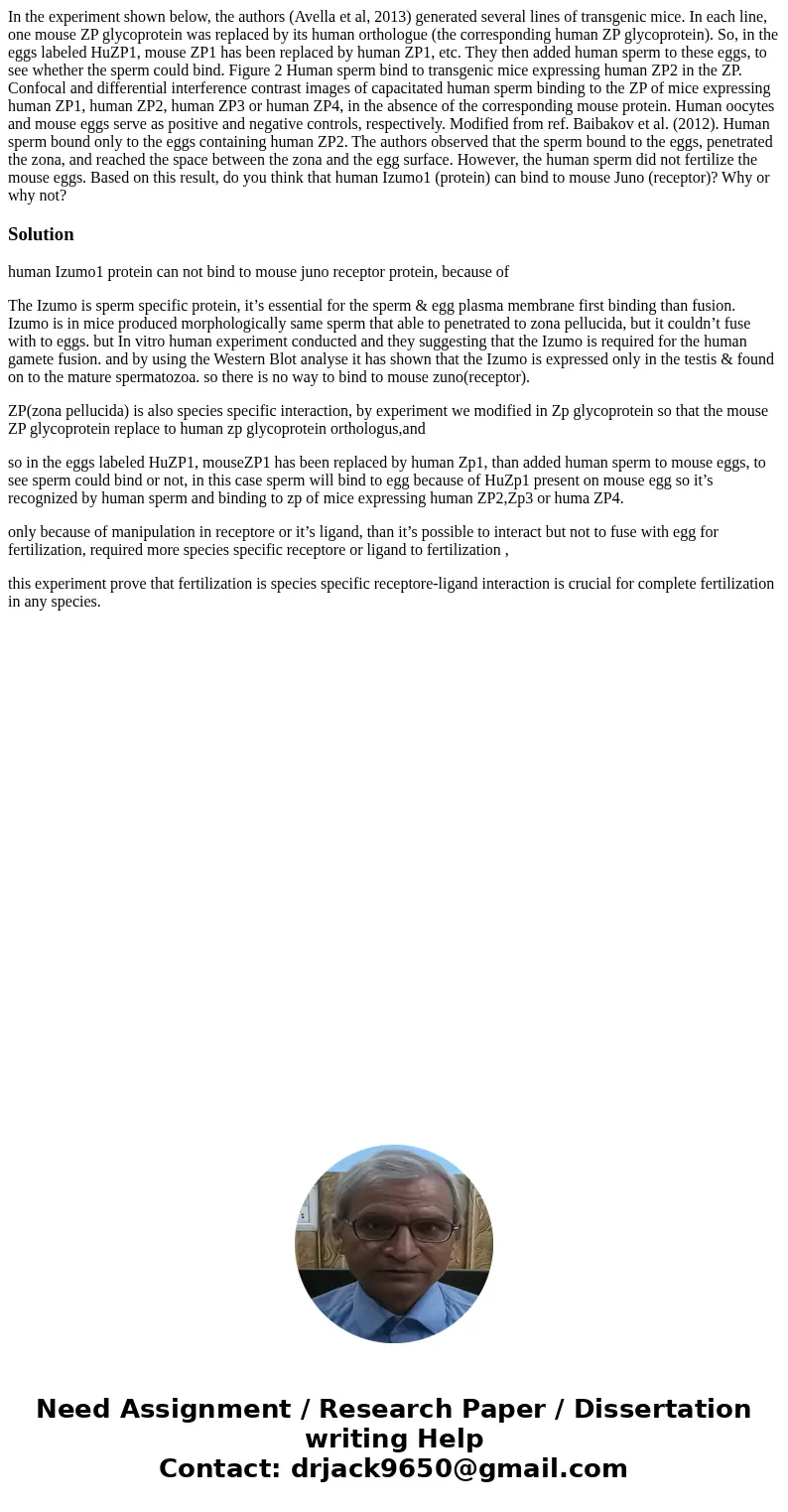In the experiment shown below the authors Avella et al 2013
Solution
human Izumo1 protein can not bind to mouse juno receptor protein, because of
The Izumo is sperm specific protein, it’s essential for the sperm & egg plasma membrane first binding than fusion. Izumo is in mice produced morphologically same sperm that able to penetrated to zona pellucida, but it couldn’t fuse with to eggs. but In vitro human experiment conducted and they suggesting that the Izumo is required for the human gamete fusion. and by using the Western Blot analyse it has shown that the Izumo is expressed only in the testis & found on to the mature spermatozoa. so there is no way to bind to mouse zuno(receptor).
ZP(zona pellucida) is also species specific interaction, by experiment we modified in Zp glycoprotein so that the mouse ZP glycoprotein replace to human zp glycoprotein orthologus,and
so in the eggs labeled HuZP1, mouseZP1 has been replaced by human Zp1, than added human sperm to mouse eggs, to see sperm could bind or not, in this case sperm will bind to egg because of HuZp1 present on mouse egg so it’s recognized by human sperm and binding to zp of mice expressing human ZP2,Zp3 or huma ZP4.
only because of manipulation in receptore or it’s ligand, than it’s possible to interact but not to fuse with egg for fertilization, required more species specific receptore or ligand to fertilization ,
this experiment prove that fertilization is species specific receptore-ligand interaction is crucial for complete fertilization in any species.

 Homework Sourse
Homework Sourse